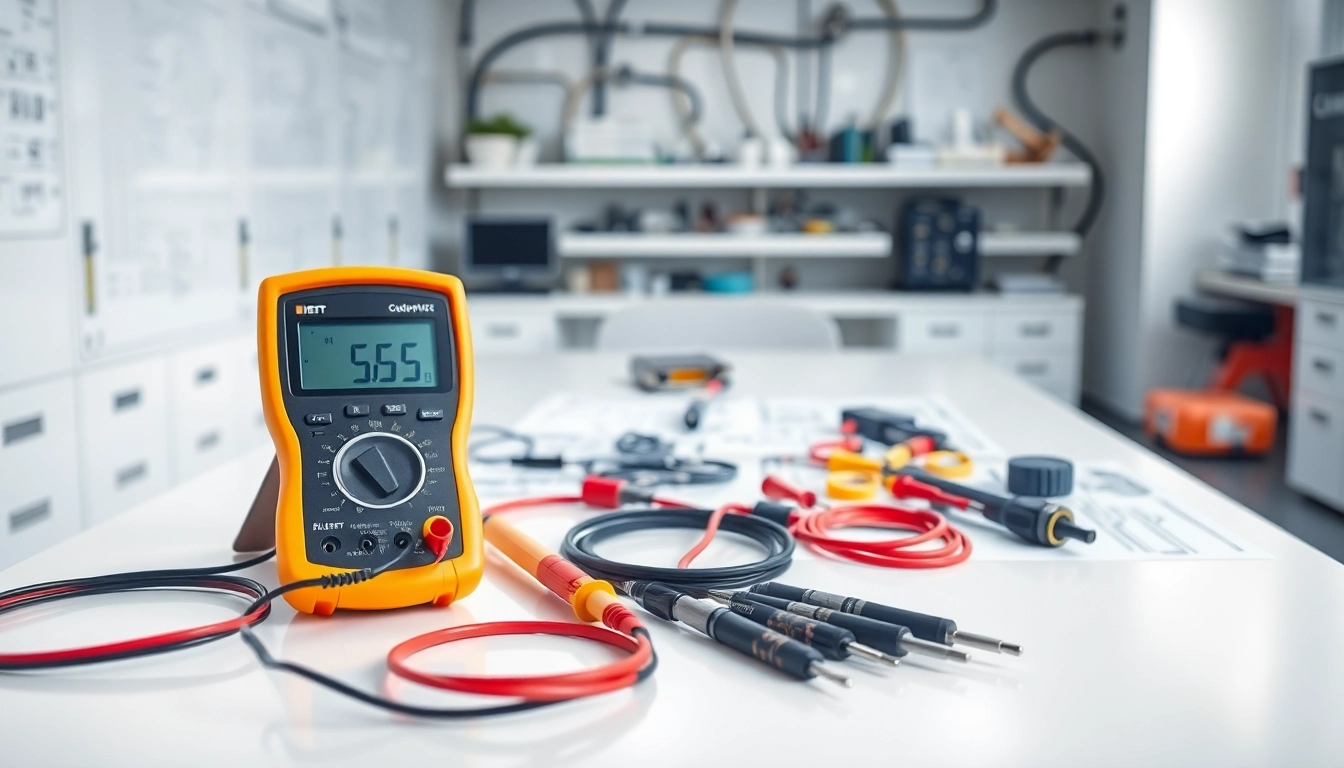Understanding Laminating Resin
What is Laminating Resin?
Laminating resin is a specialized type of resin used primarily in the composite manufacturing industry. Its primary function is to bind layers of material together, typically in construction processes that involve fiberglass or carbon fiber. Unlike other types of resins, laminating resin remains pliable for a longer duration, allowing it to create a strong bond between materials without hardening too quickly. This property makes it advantageous for applications where the positioning of layers is crucial, such as in boat building and aerospace components.
The chemical composition of laminating resin often includes a mixture of epoxy or polyester resins combined with hardeners. This combination allows for various properties, such as improved strength, flexibility, and impact resistance. It’s a versatile material that can be adapted for different applications, making it a go-to choice in many manufacturing processes. Additionally, the use of laminating resin contributes to the durability and longevity of finished products.
Types of Laminating Resin
Laminating resins can be broadly classified into two categories: polyester laminating resin and epoxy laminating resin. Each type possesses unique characteristics that suit different applications.
Polyester Laminating Resin
Polyester laminating resin is widely used for applications that require high strength and resistance to environmental conditions. It is typically less expensive than epoxy and has a faster curing time. The resin cures through a chemical reaction initiated by a catalyst, which can be adjusted according to specific project needs. For instance, it can be useful in boat construction, where weight and moisture resistance are critical factors. The downside is that polyester resin can be more brittle than epoxy when cured.
Epoxy Laminating Resin
Epoxy laminating resin offers superior flexibility and bonding strength compared to its polyester counterpart. It has a slower curing process, allowing for better penetration and bonding between fiber layers. This resin is particularly favorable in applications where high levels of durability and structural integrity are required, such as in aerodynamic products and high-performance sports equipment. Due to its excellent moisture and chemical resistance, epoxy laminating resin is frequently used in environments that demand exceptional performance.
Applications of Laminating Resin
Laminating resin finds extensive use in various fields, thanks to its versatile properties. Here are some notable applications:
Marine Construction
In marine environments, laminating resin is instrumental in building boats and yachts. Its resistance to water, UV light, and other environmental stresses makes it a prime choice for constructing hulls and other components that require strength and longevity.
Aerospace Engineering
The aerospace industry benefits significantly from the use of laminating resin in fabricating lightweight composite structures. Here, the high strength-to-weight ratio is crucial for performance and fuel efficiency.
Automotive Manufacturing
In automotive applications, laminating resin is utilized to enhance the structural integrity of vehicles while maintaining a reduced weight. This is particularly important for electric vehicles where weight plays a significant role in battery efficiency and performance.
Sports Equipment
Various sports equipment, such as bicycles and surfboards, are crafted using laminating resin due to its capability to provide lightweight, durable components that can withstand stress and strain during use.
Choosing the Right Laminating Resin for Your Project
Factors to Consider in Selection
When selecting the appropriate laminating resin for a given project, several critical factors should be considered:
Project Requirements
Understanding the specific requirements of your project is vital. Consider the environmental conditions the completed product will face, as well as the mechanical stresses it may endure. For example, projects requiring waterproofing may necessitate the use of polyester resin, while those needing additional flexibility and strength might benefit from epoxy.
Curing Time
The curing time of the resin can significantly impact your project timeline. Polyester resins generally cure faster than epoxies, which can be advantageous in time-sensitive applications. However, epoxy resins allow for a more extended working time, granting flexibility in manipulating and positioning layers before curing begins.
Cost Considerations
Certain projects may be constrained by budgetary limits. Polyester laminating resin usually offers a lower initial cost, making it appealing for large-scale projects. However, the performance and longevity of epoxy resins may justify their higher price in high-performance applications.
Comparing Polyester and Epoxy Laminating Resin
As the two primary types of laminating resin, comparing polyester and epoxy is essential in making an informed decision:
Strength and Durability
Epoxy laminating resin typically provides better adhesion and durability than polyester, especially under extreme conditions. It is less prone to cracking or delaminating when exposed to high stress or moisture.
Ease of Use
Polyester resin is generally easier to work with for beginners as it cures quickly and requires less measuring and mixing. In contrast, epoxy resin demands more careful handling due to its complex mixing ratios and longer curing processes.
Cost-Effectiveness
While the upfront cost of polyester might be lower, the overall cost-effectiveness depends on the application. In scenarios where performance and longevity are crucial, investing in epoxy laminate can lead to lower maintenance and replacement costs in the long run.
Cost vs. Performance in Laminating Resin
Finding a balance between cost and performance is an ongoing challenge in material selection:
Initial Investment
The initial cost of materials may vary notably between polyester and epoxy laminating resins. While polyester typically has a lower price, the potential need for repairs or replacements should be factored into the total cost consideration.
Long-Term Savings
Investing in higher-quality epoxy resin might yield savings over time due to its durability and resistance to environmental impacts. This can reduce costs associated with maintenance, repairs, and replacements, making it a wise investment for high-demand applications.
Application Techniques for Laminating Resin
Preparing Your Surface
Proper preparation of the surface is crucial when working with laminating resin. Follow these steps to ensure optimal adhesion:
Cleaning
Ensure the surface is clean and free of dust, grease, or contaminants. A clean surface enhances adhesion and prevents delamination.
Roughening
For better bonding, scuffing the surface with sandpaper can increase the surface area for the resin to attach to, thereby improving adhesion.
Effective Application Methods
There are several methods for applying laminating resin, each with its own advantages. Consider the following techniques:
Saturation Method
This method involves thoroughly saturating fiberglass or carbon fiber cloth with the resin, ensuring even distribution and minimizing air pockets. This technique is often employed in boat building and composite fabrication.
Brushing and Rolling
For larger surfaces, using a brush or roller can facilitate even application. A brush allows for detailed work in small or complex areas, while a roller covers large expanses efficiently.
Tips for Achieving a Perfect Finish
To attain a high-quality finish, follow these tips:
Layer Thickness
Apply resin in thin layers. Thinner layers cure more evenly and help prevent issues with bubbles or uneven curing.
Use of a Heat Gun
For bubbles that may form during application, a heat gun can be used carefully to draw air to the surface without damaging the resin.
Common Challenges in Using Laminating Resin
Issues with Curing Time
Curing time can significantly affect the outcome of a project. Factors such as temperature, humidity, and thickness can influence how well the resin cures. To mitigate issues:
Temperature Control
Maintain an optimal temperature range for resin curing—ideally between 75°F and 85°F. Keeping the working environment consistent will yield better results.
Dealing with Bubbles and Voids
Bubbles can compromise the strength and appearance of the final product. Here are strategies to eliminate them:
Vacuum Bagging
This advanced method eliminates air by creating a vacuum around the resin and fiberglass layers. It helps to achieve a flawless finish while ensuring strong adhesion.
Ensuring Adhesion to Fiberglass
Inadequate adhesion can lead to delamination—this is critical to avoid:
Proper Mixing
Thoroughly mix the resin and hardener to ensure a consistent chemical reaction. This step is crucial for achieving optimal bonding strength.
Maintenance and Storage of Laminating Resin
Best Practices for Storage
Proper storage of laminating resin is vital for maintaining its effectiveness and longevity. Consider these best practices:
Temperature Regulation
Store resin in a cool, dry place. Extreme temperatures can affect its ability to cure properly, whereas a stable environment preserves its integrity.
Extending Shelf Life of Laminating Resin
To maximize the shelf life of laminated resins, adhere to the following guidelines:
Airtight Containers
Keep resin in airtight containers to prevent moisture absorption and contamination, which can deteriorate its properties over time.
Disposal Guidelines for Laminating Resin
Disposing of laminating resin should be done responsibly to minimize environmental impact:
Follow Local Regulations
Check local waste disposal regulations. Many areas require specific disposal protocols for hazardous materials like laminating resin, and failing to comply can lead to legal complications.
Utilizing Recycling Programs
Some recycling programs may accept epoxy or polyester resin products for proper processing. Investigating such options can promote sustainability.



